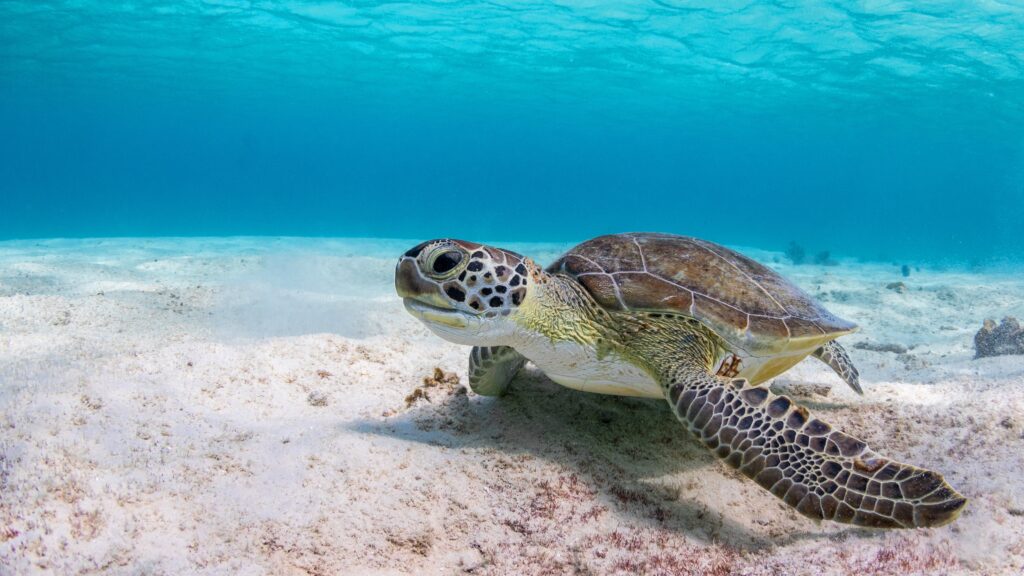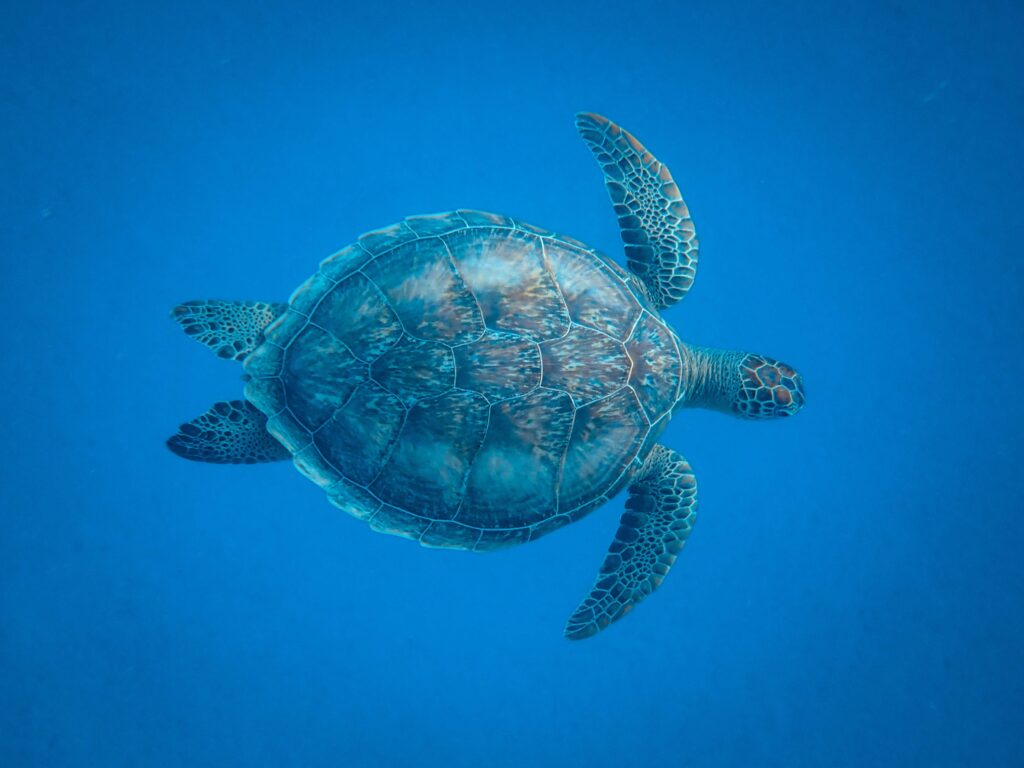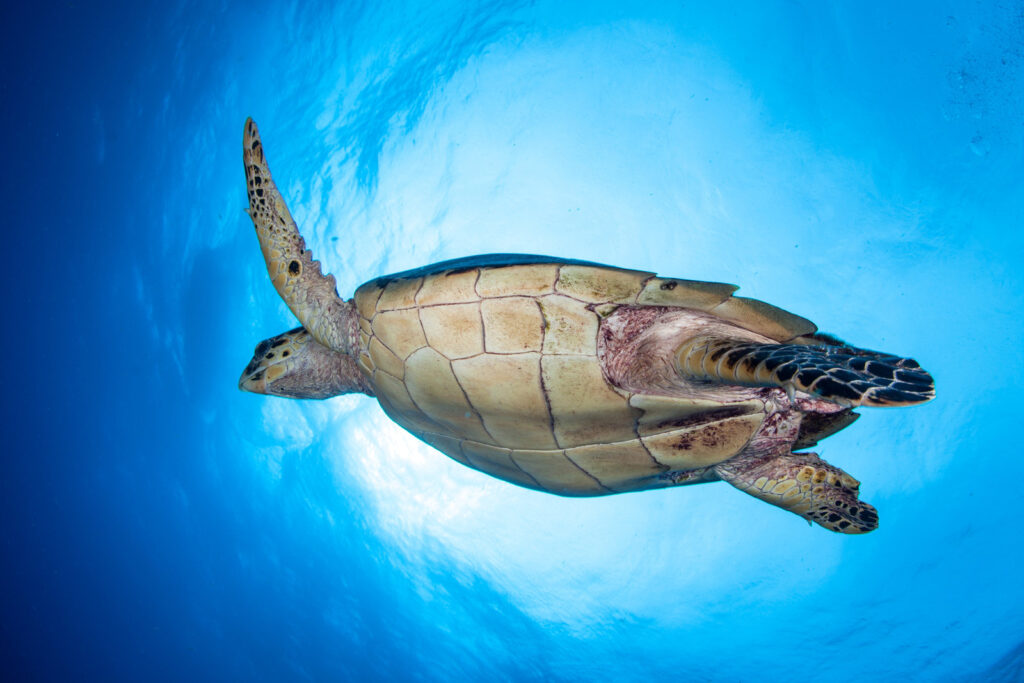Table of Contents
ToggleIntroduction
Red-eared turtles, scientifically known as Trachemys scripta elegans, are one of the world’s most popular and commonly kept turtle species. These aquatic reptiles are known for their distinctive red markings and vibrant green coloration around their ears. The red-eared turtles’ ability to spend extended periods submerged in water often captures the curiosity of pet owners and enthusiasts. Let’s discuss Can Red Eared Turtles Breathe Underwater? Read on to get interesting facts.

Anatomy Of Red-Eared Turtles
To understand the respiratory capabilities of red-eared turtles, it’s essential to examine their anatomy, specifically their respiratory and aquatic adaptations.
Cloacal Respiration: One of the unique features of red-eared turtles is cloacal respiration. The cloaca is a multi-purpose opening for excretion, reproduction, and respiration. Like many other turtle species, red-eared turtles can absorb oxygen through the thin-walled cloaca when submerged in water. This adaptation allows them to extract oxygen from the surrounding environment, providing an additional means of respiration.
Lung Respiration: While red-eared turtles possess cloacal respiration, they are primarily air-breathing animals with well-developed lungs. The lungs of red-eared turtles are adapted for breathing atmospheric air. When at the water’s surface, red-eared turtles extend their heads to live, drawing in air through their nostrils.
Buoyancy and Shell Structure: The shell of red-eared turtles plays a crucial role in buoyancy. Its shape and structure allow them to control their position in the water. Red-eared turtles can alter their buoyancy by adjusting the air volume in their lungs, facilitating movement and enabling them to rise or descend in the water.
Can Red-Eared Turtles Breathe Underwater?
While red-eared turtles possess adaptations that allow them to extract oxygen from water to some extent, they cannot breathe underwater like fish do. Turtles lack gills to continuously extract dissolved oxygen from water, unlike fish. Instead, red-eared turtles rely on cloacal and lung respiration to meet their oxygen needs.
Cloacal Respiration
Mechanism: When submerged, red-eared turtles can perform cloacal respiration by extracting oxygen from the water through the thin tissues in their cloaca.
Limited Duration: Cloacal respiration provides a supplemental source of oxygen, particularly during periods of low activity or when the turtles are resting. However, it is not sufficient for sustained, long-term underwater respiration.
Lung Respiration
Breathing Process: Red-eared turtles primarily breathe air using their lungs. They must come to the water’s surface regularly to live.
Buoyancy Control: The ability to control buoyancy through manipulating air in their lungs allows red-eared turtles to regulate their position in the water and ascend to the surface for air.
Factors Affecting Underwater Respiration

Several factors influence the underwater respiration capabilities of red-eared turtles:
Temperature: The metabolic rate of red-eared turtles is influenced by water temperature. In colder temperatures, their metabolic rate decreases, leading to a reduced need for oxygen. Warmer water temperatures may increase the frequency of trips to the surface for breathing.
Activity Level: Active turtles require more oxygen than those at rest. Red-eared turtles may surface more frequently to replenish their oxygen supply when engaged in activities such as swimming, foraging, or basking.
Age and Size: Younger turtles and smaller individuals may have higher metabolic rates, requiring more frequent trips to the surface for breathing. As turtles grow and their metabolism stabilizes, the surfacing frequency may decrease.
Water Quality: Poor water quality, low oxygen levels, or high levels of pollutants can negatively impact the respiratory health of red-eared turtles. Adequate filtration and water quality maintenance are essential for their well-being.
For those keeping red-eared turtles as pets, observing their behavior can provide insights into their respiratory needs and habits:
Basking Behavior: Red-eared turtles are known for basking, exposing themselves to sunlight. Basking serves multiple purposes, including thermoregulation and drying of the shell. It also allows them to take in additional oxygen, as they breathe more efficiently when in contact with air.
Surface Behavior: Regularly monitoring your red-eared turtle’s behavior at the water’s surface is crucial. Frequent surfacing for air is normal, but prolonged periods underwater without surfacing could indicate respiratory distress or other health issues.
Providing a Proper Habitat: Creating a suitable aquatic habitat is essential for the well-being of red-eared turtles. This includes maintaining appropriate water temperature, ensuring good water quality, and providing basking areas with heat and UVB light access.
Consulting a Veterinarian: If you notice any abnormal behavior or signs of respiratory distress, such as gasping for air or open-mouthed breathing, it’s crucial to seek the advice of a veterinarian specializing in reptile care.
Conclusion
While red-eared turtles possess remarkable adaptations that allow them to extract oxygen from water to some extent, they cannot breathe underwater in the same way as fish. Their ability to perform cloacal respiration and control buoyancy through lung respiration enables them to thrive in aquatic environments. Red-eared turtles need to surface to breathe air regularly, and proper care, including maintaining water quality and providing basking opportunities, is essential for their well-being.
As captivating aquatic companions, red-eared turtles continue to intrigue researchers and enthusiasts alike, shedding light on the incredible adaptations that allow them to navigate aquatic and terrestrial environments. Whether in the wild or as beloved pets, understanding and appreciating the respiratory dynamics of red-eared turtles contribute to their optimal care and welfare.







